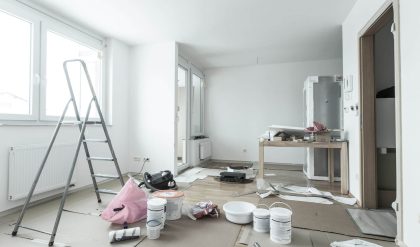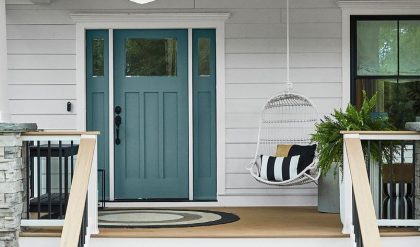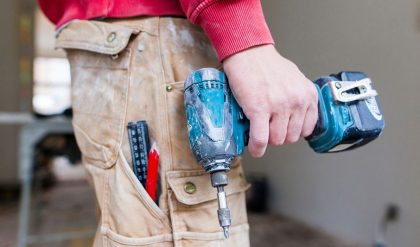
Declutter Your Home: 7 Simple Steps for a Stress-Free Space
Is your home feeling more like a storage unit than a sanctuary? Are overflowing closets and cluttered countertops contributing to a sense of overwhelm? You’re not alone. Many of us struggle to maintain a tidy, organized home, but the truth is, a decluttered space can significantly impact your mental well-being. A clean, organized home fosters calm, clarity, and a sense of control, leaving you feeling refreshed and ready to tackle the day. This isn’t about achieving a sterile, magazine-perfect environment; it’s about creating a space that supports your lifestyle and reduces stress.
Step 1: The Mindset Shift – From Chaos to Calm
Before you even touch a single item, adjust your mindset. Decluttering isn’t a one-day chore; it’s a journey towards a more intentional way of living. Forget the pressure of perfection. Focus on small, manageable steps. Think of it as a self-care practice, a way to invest in your peace of mind. Embrace the process, celebrate small victories, and remember that setbacks are part of the journey.
Step 2: Zone in on One Area
Don’t try to tackle the entire house at once. Overwhelm is the enemy of progress. Choose one small area – a drawer, a shelf, a corner of a room – to start. This focused approach allows you to build momentum and experience quick wins, motivating you to continue. Starting small prevents burnout and fosters a sense of accomplishment.
Step 3: The Three-Box Method
Gather three boxes or bags: one for items to keep, one for donation or charity, and one for trash. As you go through each item, make a quick decision: keep, donate, or trash. Don’t overthink it. If you haven’t used something in a year, it’s a strong indicator it’s time to let it go.
Step 4: The Power of “Maybe”
Inevitably, some items will fall into a “maybe” category. Create a separate box or designated space for these items. Give yourself a timeframe (e.g., three months) to revisit this box. If you haven’t used or needed these items within that timeframe, it’s likely time to donate or discard them.
Step 5: Digital Decluttering
Our digital lives are just as cluttered as our physical spaces. Take some time to declutter your computer, phone, and tablets. Delete unnecessary files, unsubscribe from unwanted emails, and organize your apps. This digital detox can be just as freeing as physical decluttering.
Step 6: Maximize Storage Solutions
Once you’ve decluttered, it’s essential to implement smart storage solutions to prevent future clutter. Utilize vertical space, invest in drawer dividers, and use clear containers to maximize visibility and organization. A well-organized space is easier to maintain.
Step 7: Maintain the Momentum
The key to a long-term decluttered home is consistent maintenance. Implement a simple routine – a daily tidying session, a weekly deeper clean – to prevent clutter from accumulating again. This consistent effort prevents the need for major decluttering sessions in the future.
Decluttering Quick Wins: Table of Simple Tips
| Area | Quick Win |
|---|---|
| Kitchen Counters | Clear off all unnecessary appliances. |
| Closet | Donate clothes you haven’t worn in a year. |
| Bathroom | Toss expired toiletries. |
| Living Room | Organize remote controls in a designated spot. |
Decluttering isn’t just about tidying; it’s about reclaiming your space and your peace of mind. By following these simple steps, you can create a calm, organized home that supports your well-being and allows you to thrive.

Additional Information
Decluttering Your Home: A Deeper Dive into Stress Reduction and Enhanced Well-being
The assertion that decluttering leads to a stress-free space is supported by a growing body of research linking physical environments to mental well-being. While a simple seven-step guide provides a practical framework, a deeper analysis reveals the nuanced psychological and practical implications of decluttering. This expanded discussion explores the underlying mechanisms and offers strategies for maximizing the benefits.
Beyond the Seven Steps: Understanding the Psychology of Clutter
A seven-step decluttering plan, however effective, often overlooks the emotional baggage associated with possessions. Items are not merely objects; they are often imbued with memories, representing milestones, relationships, and aspirations. The difficulty in parting with them stems from this emotional attachment, leading to procrastination and feelings of overwhelm.
1. The Emotional Attachment Trap: Research in psychology highlights the concept of “possessions as a part of the self.” People invest their identity in their belongings, leading to resistance towards discarding them. This is particularly evident with sentimental items – old photographs, childhood toys, gifts from loved ones. The act of decluttering, therefore, can feel like a form of letting go of aspects of one’s past or even self-identity.
2. Decision Fatigue and the Paralysis of Choice: The sheer volume of possessions can create decision fatigue, making the task of decluttering seem insurmountable. The constant mental weighing of “keep” versus “discard” depletes cognitive resources, leading to procrastination and feelings of anxiety.
3. The “Someday” Syndrome: The belief that items will be useful “someday” contributes significantly to clutter accumulation. This often manifests in the hoarding of potentially useful items – “just in case” scenarios – resulting in overflowing storage spaces and increased stress.
Analyzing the Seven Steps Through a Psychological Lens:
Let’s examine how the seven steps can be augmented with a deeper understanding of these psychological barriers:
-
Step 1 (Categorization): This step should be approached with mindful consideration. Instead of merely sorting by category, consciously evaluate the emotional significance of each item within the category. This allows for a more intentional decision-making process, minimizing decision fatigue.
-
Step 2 (Decluttering): The “one-in, one-out” rule can combat the accumulation of items. Furthermore, scheduling regular decluttering sessions prevents overwhelming accumulation.
-
Steps 3-7 (Organizing and Maintaining): These steps are crucial for sustaining the decluttered environment. Developing a system that aligns with personal preferences and lifestyle is vital for long-term success. This system should also incorporate mechanisms for handling new acquisitions to prevent future clutter build-up.
Practical Strategies for Enhanced Effectiveness:
- Mindful Decluttering: Approach decluttering as a mindful practice, acknowledging the emotions associated with each item. This allows for a more conscious and less stressful process.
- The 20/20 Rule: If an item hasn’t been used in 20 months and isn’t worth $20, consider discarding or donating it. This provides a practical and objective criterion for decision-making.
- Professional Help: For individuals struggling with hoarding tendencies or severe clutter issues, seeking professional help from a therapist or organizer is crucial.
Conclusion:
While a seven-step guide offers a practical starting point, a comprehensive approach to decluttering requires understanding the intricate relationship between possessions, emotions, and well-being. By addressing the psychological barriers and implementing strategies that incorporate mindful decision-making and sustainable organizational systems, individuals can successfully declutter their homes and experience the associated benefits of reduced stress, improved focus, and enhanced quality of life. The real value lies not just in the physical space gained, but in the mental clarity and peace of mind achieved.






